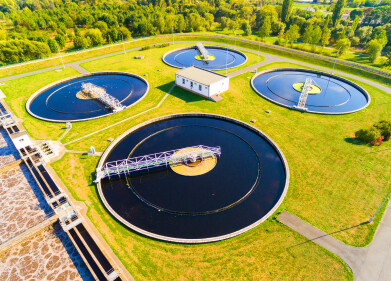Sewage monitoring
Sludge Interface Measurement: Why it is important and why we need it.
Feb 12 2021
Sludge blanket control is a crucial part of any wastewater treatment process and the correct monitoring of this part of the process can have beneficial results in terms of process efficiency and cost savings.
In the primary sedimentation stage, sewage will flow through large tanks – these are commonly called primary clarifiers or primary settlement tanks. These tanks are used to settle sludge by allowing grease and oils to rise to the surface where they are skimmed off. A rotating bridge moves around the tank at a slow speed, to scrape off unwanted particles from the top of the water.
Sludge level measurement works by measuring the distance between the sludge blanket surface and the water level. Once the sludge has reached the required density, the accompanying controller will then switch on the pumps and pump the sludge into digestors, ready for the secondary treatment stage.
Secondary treatment is designed to degrade the biological content of the sewage, separating treated water from biomass, resettling the sludge, and sufficiently thickening it so that when the sludge is returned to the tank inlet, it can maintain the biomass concentration levels required.
The final stage of the sludge treatment process is the tertiary tanks for clarifiers, which further purify the discharge effluent. These tanks are used to remove the fine particles from the effluent – which usually will flow over a weir or down an open channel and eventually discharge back into local water sources.
There are many advantages and benefits from monitoring sludge blanket level, including some significant capital saving costs and a reduction in carbon footprints. Pulsar Measurement’s Sludge Finder 2 is widely used across the globe to detect sludge blanket levels in primary, secondary and tertiary tanks.
Effective sludge level measurement can help treatment plants or industrial customers generate their own electricity. Many large sewage treatment works use the gas produced in digestors to drive turbines that generate electricity. The more gas produced, the more electricity that can be generated. One of the most important determinants of gas volume is the quality and density of the sludge that is being delivered to the digestors.
In addition, operators can ensure that sludge extraction pumps are used efficiently, and excess poorly settled sludge does not wash out into effluent paths. This can prevent costly over-spills and regulation breaches.
Further sludge handling processes such as thickeners and dewatering equipment will all perform better when fed with a higher concentration of sludge. The diluted and lower concentration sludge will require increased dosing, heating costs of digestors, and increased pumping costs.
On top of plant and operation savings, it also enables operating companies to save on labor costs of manual sampling and means that there is a wealth of feedback instantly available, allowing for overall greater system control for plant managers and wastewater engineers worldwide.
Digital Edition
IET 35.2 March
April 2025
Air Monitoring - Probe Sampling in Hazardous Areas Under Extreme Conditions - New, Game-Changing Sensor for Methane Emissions - Blue Sky Thinking: a 50-year Retrospective on Technological Prog...
View all digital editions
Events
Apr 29 2025 Edmonton, AB, Canada
Apr 30 2025 Ankara, Turkey
May 06 2025 Nuremberg, Germany
May 10 2025 Karachi, Pakistan
May 11 2025 Vienna, Austria








_(4427399123)-(2).jpg)










